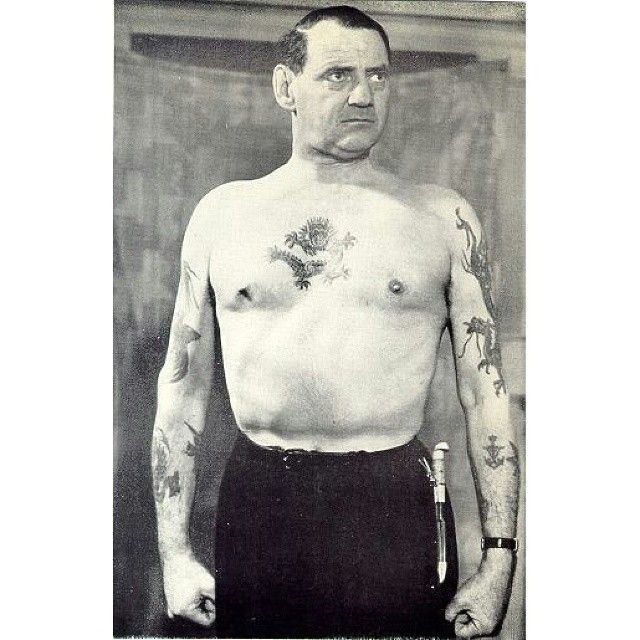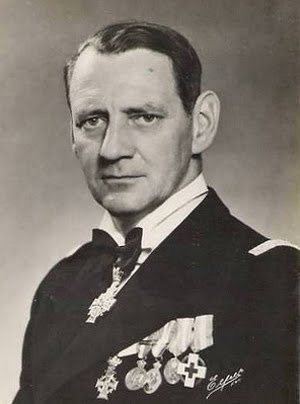Predecessor Christian X Role Former King of Denmark Name Frederick of | ||
 | ||
Reign 20 April 1947 –14 January 1972 Prime Ministers DenmarkHans HedtoftErik EriksenHans Christian HansenViggo KampmannJens Otto KragHilmar BaunsgaardFaroe IslandsAndrass SamuelsenKristian DjurhuusPeter Mohr DamHakun DjurhuusAtli Dam Born 11 March 1899Sorgenfri Palace ( 1899-03-11 ) Issue Margrethe IIPrincess BenedikteAnne-Marie, Queen of Greece Children Margrethe II of Denmark, Queen Anne-Marie of Greece, Princess Benedikte of Denmark Parents Alexandrine of Mecklenburg-Schwerin, Christian X of Denmark Siblings Knud, Hereditary Prince of Denmark Similar People Ingrid of Sweden, Margrethe II of Denmark, Christian X of Denmark, Frederik - Crown Prince of, Frederick VIII of Denmark | ||
Frederick IX (Christian Frederik Franz Michael Carl Valdemar Georg; 11 March 1899 – 14 January 1972) was King of Denmark from 1947 to 1972.
Contents
- Birth and family
- Early life
- Marriage and issue
- Reign
- Changes to the Act of Succession
- Death and funeral
- Succession
- Legacy
- Titles and styles
- Foreign honours
- References

Born into the House of Glücksburg, Frederick was the eldest son of King Christian X and Queen Alexandrine of Denmark. He became crown prince when his father succeeded as king in 1912. As a young man, he was educated at the Royal Danish Naval Academy. In 1935, he was married to Princess Ingrid of Sweden and they had three daughters, Margrethe, Benedikte and Anne-Marie. During Nazi Germany's occupation of Denmark, Frederick acted as regent on behalf of his father from 1942 until 1943.
Frederick became king on his father's death in early 1947. During Frederick IX's reign, Danish society shook off the restrictions of an agrarian society, developed a welfare state and, as a consequence of the booming economy of the 1960s, women entered the labour market. Denmark modernized, bringing new demands on the monarchy and Frederick's role as a constitutional monarch. Frederick IX died in 1972, and was succeeded by his eldest daughter, Margrethe.
Birth and family

Prince Frederick was born on 11 March 1899 at Sorgenfri Palace in Kongens Lyngby on Zealand during the reign of his great-grandfather King Christian IX. His father was Prince Christian of Denmark (later King Christian X), the eldest son of Crown Prince Frederick and Princess Louise of Sweden (later King Frederick VIII and Queen Louise). His mother was Alexandrine of Mecklenburg-Schwerin, a daughter of Frederick Francis III, Grand Duke of Mecklenburg-Schwerin and Grand Duchess Anastasia Mikhailovna of Russia.
He was baptised at Sorgenfri Palace on 9 April 1899. The young prince had 21 godparents, among them his great-grandfather Christian IX of Denmark, Nicholas II of Russia, George I of Greece, Oscar II of Sweden and Norway, his grandfather Crown Prince Frederick of Denmark, the Prince of Wales (later King Edward VII of the United Kingdom) and his uncle Frederick Francis IV, Grand Duke of Mecklenburg-Schwerin.
Frederick's only sibling, Knud, was born one year after Frederick. The family lived in apartments in Christian VIII's Palace at Amalienborg Palace in Copenhagen, in Sorgenfri Palace near the capital and in a summer residence, Marselisborg Palace in Aarhus in Jutland, which Frederick's parents had received as a wedding present from the people of Denmark in 1898. In 1914, the King also built the villa Klitgården in Skagen in Northern Jutland.
Early life
Christian IX died on 29 January 1906, and Frederick's grandfather Crown Prince Frederick succeeded him as King Frederick VIII. Frederick's father became crown prince, and Frederick moved up to second in line to the throne.
Just six years later, on 14 May 1912, King Frederick VIII died, and Frederick's father ascended the throne as King Christian X. Frederick himself became crown prince. On 1 December 1918, as the Danish–Icelandic Act of Union recognized Iceland as a fully sovereign state in personal union with Denmark through a common monarch, Frederick also became crown prince of Iceland (where his name was officially spelled Friðrik). However, as a national referendum established the Republic of Iceland on 17 June 1944, he never succeeded as king of Iceland.
Frederick was educated at the Royal Danish Naval Academy (breaking with Danish royal tradition by choosing a naval instead of an army career) and the University of Copenhagen. Before he became king, he had acquired the rank of Rear Admiral and he had had several senior commands on active service. He acquired several tattoos during his naval service.
In addition, with his great love of music, the king was an able piano player and conductor.
Marriage and issue
In 1922, Frederick was engaged to Princess Olga of Greece and Denmark, his second cousin. They never wed.
Instead, on 15 March 1935, a few days after his 36th birthday, he was engaged to Princess Ingrid of Sweden (1910–2000), a daughter of Crown Prince Gustaf Adolf (later King Gustaf VI Adolf of Sweden) and his first wife, Princess Margaret of Connaught. They were related in several ways. In descent from Oscar I of Sweden and Leopold, Grand Duke of Baden, they were double third cousins. In descent from Paul I of Russia, Frederick was a fourth cousin of Ingrid's mother. They married in Stockholm Cathedral on 24 May 1935. Their wedding was one of the greatest media events of the day in Sweden in 1935, and among the wedding guests were the King and Queen of Denmark, the King and Queen of Belgium and the Crown Prince and Crown Princess of Norway.
Upon their return to Denmark, the couple were given Frederick VIII's Palace at Amalienborg Palace in Copenhagen as their primary residence and Gråsten Palace in Northern Schleswig as a summer residence.
Their daughters are:
Reign
From 1942 until 1943, Frederick acted as regent on behalf of his father who was temporarily incapacitated after a fall from his horse in October 1942.
On 20 April 1947, Christian X died, and Frederick succeeded to the throne. He was proclaimed king from the balcony of Christiansborg Palace by Prime Minister Knud Kristensen.
Frederick IX's reign saw great change. During these years, Danish society shook off the restrictions of an agricultural society, developed a welfare state, and, as a consequence of the booming economy of the 1960s, women entered the labour market. In other words, Denmark became a modern country, which meant new demands on the monarchy.
In 1948, one year into the king's reign, the Faroe Islands obtained home rule and became a self-governing country within the Danish Realm.
Changes to the Act of Succession
As King Frederick IX and Queen Ingrid had no sons, it was expected that the king's younger brother, Prince Knud, would inherit the throne, in accordance with Denmark's succession law (Royal Ordinance of 1853).
However, in 1953, an Act of Succession was passed, changing the method of succession to male-preference primogeniture (which allows daughters to succeed if there are no sons). This meant that his daughters could succeed him if he had no sons. As a consequence, his eldest daughter, Margrethe, became heir presumptive. By order of 27 March 1953 the succession to the throne was limited to the issue of King Christian X.
Death and funeral
Shortly after the King had delivered his New Year's Address to the Nation at the 1971/72 turn of the year, he became ill with flu-like symptoms. After a few days rest, he suffered cardiac arrest and was rushed to the municipal hospital on 3 January. After a brief period of apparent improvement, the King's condition took a negative turn on 11 January, and he died 3 days later, on 14 January, at 7:50 pm surrounded by his immediate family and closest friends, having been unconscious since the previous day.
Following his death, the King's coffin was transported to his home at Amalienborg Palace, where it stood until 18 January, when it was moved to the chapel at Christiansborg Palace. There the King was placed on castrum doloris, a ceremony largely unchanged since introduced at the burial of Frederick III in 1670, and the last remaining royal ceremony where the Danish Crown Regalia is used. The King then lay in state for six days until his funeral, during which period the public could pay their last respects.
The funeral took place on 24 January 1972, and was split in two parts. First a brief ceremony was held in the chapel where the king had lain in state, where the Bishop of Copenhagen, Willy Westergaard Madsen said a brief prayer, followed by a hymn, before the coffin was carried out of the chapel by members of the Royal Life Guards and placed on a gun carriage for the journey through Copenhagen to Copenhagen Central Station. The gun carriage was pulled by 48 seamen and was escorted by honor guards from the Danish Army, Air Force, and Navy, as well as honor guards from France, Sweden, United Kingdom, and the United States.
At the Copenhagen Central Station, the coffin was placed in a special railway carriage for the rail journey to Roskilde. The funeral train was pulled by two DSB class E) steam engines. Once in Roskilde, the coffin was pulled through the city by a group of seamen to Roskilde Cathedral where the final ceremony took place. Previous rulers had been interred in the cathedral, but it was the King's wish to be buried outside.
Succession
He was succeeded by his eldest daughter, Queen Margrethe II. Queen Ingrid survived her husband by 28 years. She died on 7 November 2000. Her remains were interred alongside him at the burial site outside Roskilde Cathedral.
Legacy
On 20 April 1982, a statue of King Frederick IX dressed in the uniform of an admiral was unveiled by the Copenhagen harbour on the 35th anniversary of his accession to the throne in 1947 and in the tenth year after his death.
The Crown Prince Frederick Bridge which spans the Roskilde Fjord between the town of Frederikssund and the peninsula of Hornsherred, as well as the Frederick IX Bridge which spans the Guldborgsund strait between the islands of Falster and Lolland, are both named after Frederick IX.
The Crown Prince Frederick Range in Greenland was named after him when it was first mapped by Sir Martin Lindsay in 1934 during the British Trans-Greenland Expedition.
